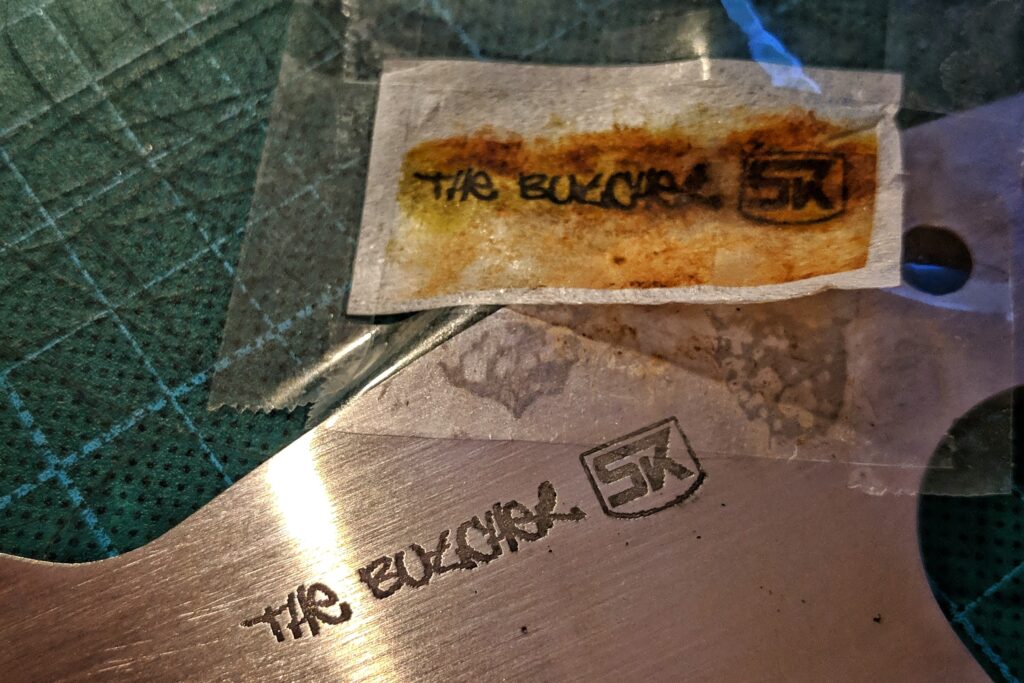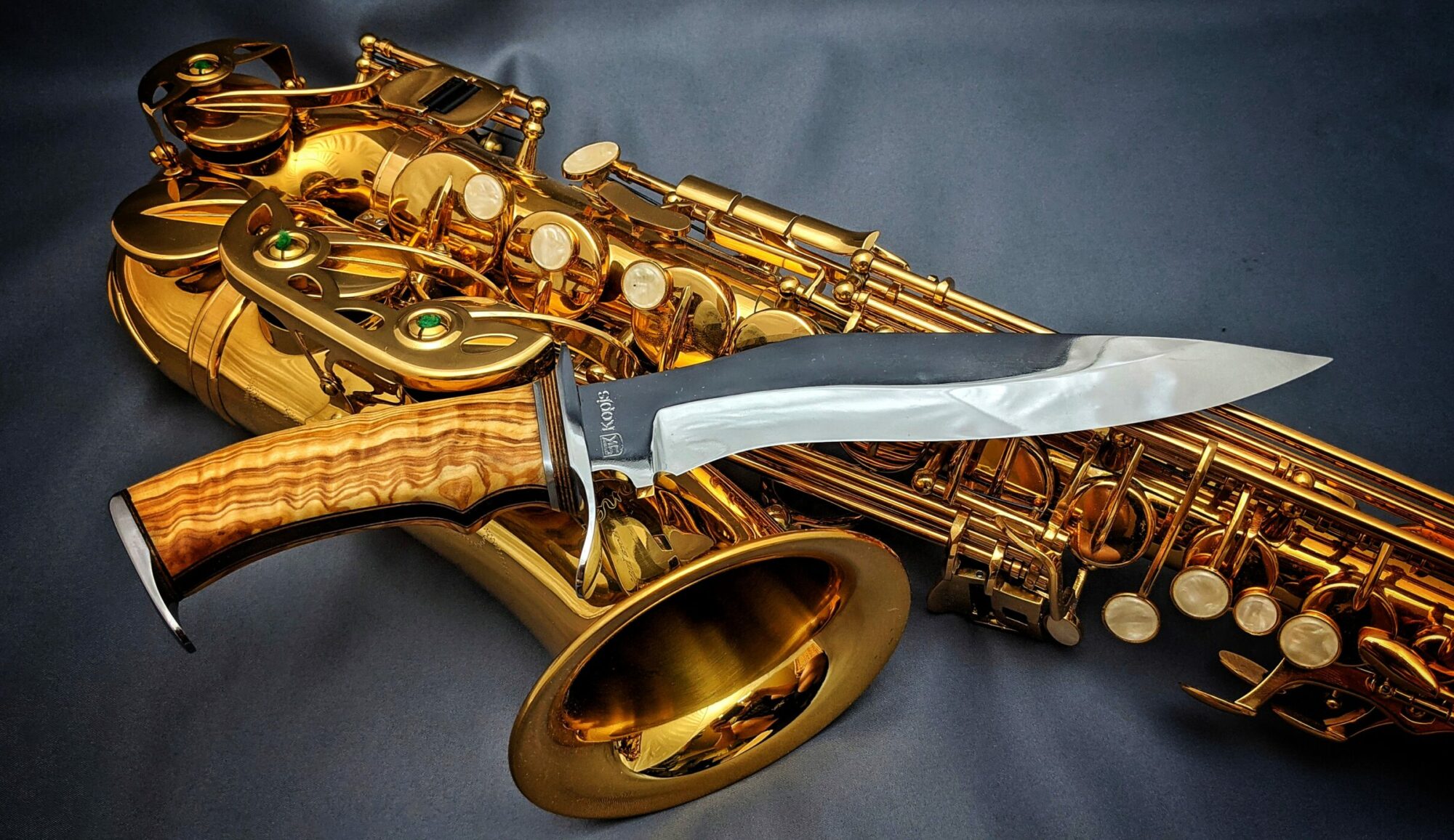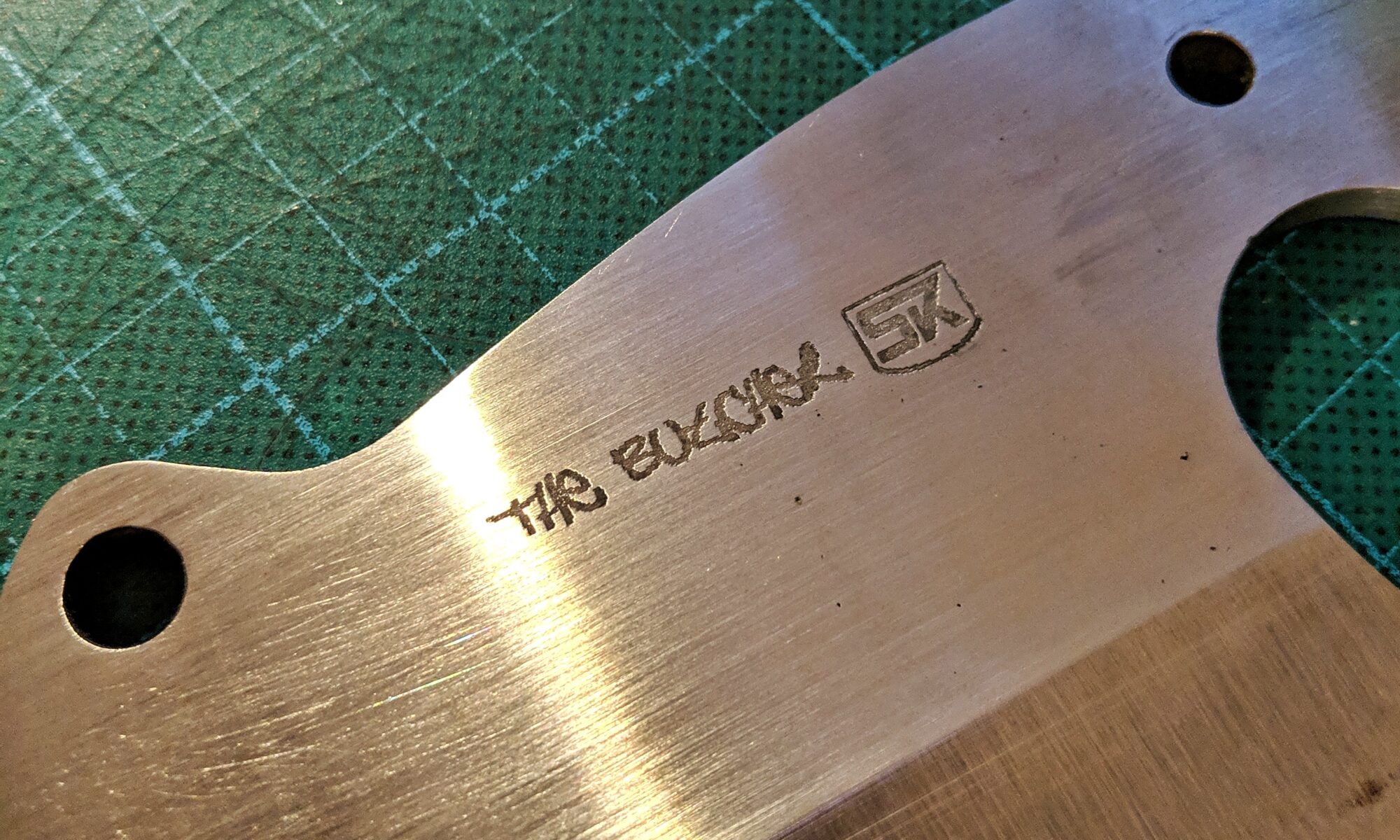In this how-to I explain how I use a Brother P-touch P700 and an STe-151 stencil tape for etching my blades.
As every creator of things, I want to put a marking on my work to show off it was done by me. Many professional makers use a metal stamp they press or hammer in the hot steel. As I do not own such a stamp I looked for different options and learned about electro chemical metal etching.
You can get professional done stencils for that, they seem to be pretty durable. But like the metal stamping this is very unflexible. I thought about putting the model name of each design on the blade and/or give each knife a unique number. There is a photo chemical procedure to do your own stencils but this looked a bit complicated. Then I found computer printed stencils for metal etching. All you need is a label printer and a special stencil tape. The stencils are not very durable – ’till now I never used a stencil twice – but they are easy and fast to print and use and not overly expensive.
You design you label in the super comfortable software that comes with the printer and you can even import graphics you have done with other programs. The printing is fast and easy like with any other label printer. I tape the stencil to the blade to make shure I mask out everything around the label material I do not want to etch.

For the actual etching I use an old power supply of an external harddrive which delivers 12 Volts and 1 Watts. I split the cables to connect the blade to the positive wire and I use the negative wire with a piece of metal where I put some tissue with salt water underneath.
Some Tricks when etching metal
- Keep the stencil dry as possible, if it gets too wet between the stencil and the blade, the etching will be at spots you do not want to etch and the form will wash out.
- Do not etch too long at a spot at a time – the etching heats up the steel and this can damage the stencil.
- Be careful to mask the blade around the stencil. Etchings in the wrong place are pretty hard to grind away.
- Use enough salt. This makes the water more conductive.
- Wash the blade right after the etching. Salt water and the remainder of the etching is pretty aggressive on the steel.
- The etching with salt water produces chlorine gases. Work at a place with lots of fresh air.


